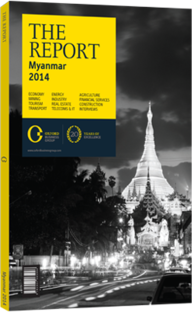First things first: The central bank prepares to push through an overhaul of the sector
On July 11, 2013 Myanmar’s President U Thein Sein signed the long-awaited Central Bank of Myanmar (CBM) Law, which will separate the central bank from the Ministry of Finance and Revenue, securing its autonomy and clearly delineating its responsibilities. The move is a key building block in the country’s series of recent reforms and aims to radically transform the way the financial sector is regulated in Myanmar, as well as re-assure potential inbound investors The financial system in Myanmar remains one of the least developed in the world, with less than 10% of the population using bank accounts and only 0.83 citizens out of every 1000 taking out a loan. People and companies within the country have struggled to access capital for the past decades as the banking system has been subject to high inflation, bank runs, insider lending and low capital bases. One of the challenges for the future of Myanmar’s financial sector will be to attract depositors back into a banking system where they can borrow from regulated and taxed sources, and the new law essential to this.
Out With The Old
The New Light of Myanmar, a state-owned newspaper, announced the law had been passed and accused the old central bank of “slow responses”, “bureaucratic sentiments”, and being “responsible for the current weak banking system” and “one of the main restrictions for potential investors”. One of the main criticisms from bodies such as the IMF was that the CBM did not have budgetary and operational independence from the government of Myanmar, effectively allowing the state to print new bills at will to fill its deficit. The new CBM Law now gives the central bank the authority and responsibility to implement monetary and exchange rate policies independently from the government and to use its role as “lender of last resort” sparingly. It grants the new body the autonomous power to enact policies it believes will fulfil the goals required.
Goals & Responsibilities
The primary objective of the CBM is to keep inflation under control and to sustain monetary and fiscal stability. It has the sole authority to issue new currency and has been tasked with establishing a credit bureau to gauge the creditworthiness of borrowers. The law also requires the CBM to regulate local banks, oversee the development of capital markets and manage the country’s official foreign exchange reserves, which are expected to rise in the coming years as gas exports increase. As reserves build up, it is expected that confidence in the local currency will increase and that investors will look more favourably on inward investments.
The decisions on exactly how to fulfil these goals will rest largely on the shoulders of the new CBM governor, U Kyaw Kyaw Maung, who was named by the president’s office. He was appointed in mid-2013 and his status was upgraded to ministerial level, giving him responsibility that has not, until now, existed in Myanmar. U Kyaw Kyaw Maung graduated from Mandalay University before joining the Ministry of Finance and Revenue. He was previously governor of the central bank from 1997 to 2007.
Open & Transparent
In line with international norms, the CBM will also adhere to a much stricter level of transparency and accountability. It is required under the new law to submit reports on the country’s monetary affairs to the government at least twice a year and to publish quarterly reports on monetary developments. The information flow will allow all manner of financial researchers and analysts to assess risk more effectively and invest accordingly.
The complex systems of monetary policy and regulation required by a central bank in any nation are an art learned after many years of careful fine-tuning, and even then the system cannot always sustain the market forces around it. Western nations have been suffering for the past five years from the holes left in their regulations, even after decades of detailed analysis and data. Myanmar is almost starting from scratch, and as it tackles the gargantuan task at hand, the world and its investors will be watching very closely.
You have reached the limit of premium articles you can view for free.
Choose from the options below to purchase print or digital editions of our Reports. You can also purchase a website subscription giving you unlimited access to all of our Reports online for 12 months.
If you have already purchased this Report or have a website subscription, please login to continue.

